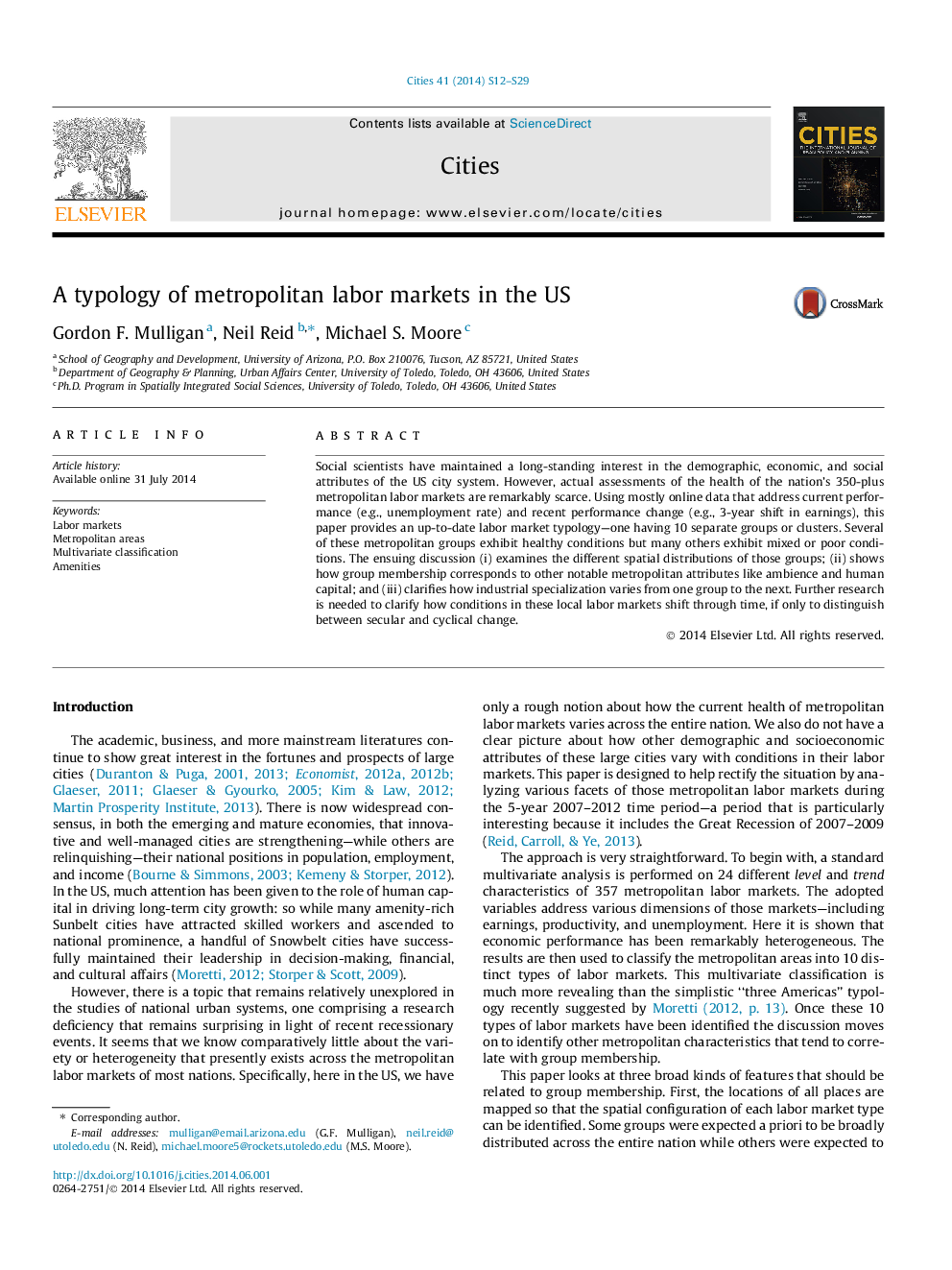| Article ID | Journal | Published Year | Pages | File Type |
|---|---|---|---|---|
| 1008269 | Cities | 2014 | 18 Pages |
•This paper examines the recent economic health of 357 MSA-level labor markets in the United States.•It examines dimensions of recent labor market performance and recent changes in performance.•MSAs are divided into 10 groups based on recent labor market performance.•Several MSA groups exhibit healthy conditions but many others exhibit mixed or poor conditions.•The spatial distribution of MSAs in each group is mapped and spatial patterns are identified.
Social scientists have maintained a long-standing interest in the demographic, economic, and social attributes of the US city system. However, actual assessments of the health of the nation’s 350-plus metropolitan labor markets are remarkably scarce. Using mostly online data that address current performance (e.g., unemployment rate) and recent performance change (e.g., 3-year shift in earnings), this paper provides an up-to-date labor market typology—one having 10 separate groups or clusters. Several of these metropolitan groups exhibit healthy conditions but many others exhibit mixed or poor conditions. The ensuing discussion (i) examines the different spatial distributions of those groups; (ii) shows how group membership corresponds to other notable metropolitan attributes like ambience and human capital; and (iii) clarifies how industrial specialization varies from one group to the next. Further research is needed to clarify how conditions in these local labor markets shift through time, if only to distinguish between secular and cyclical change.
